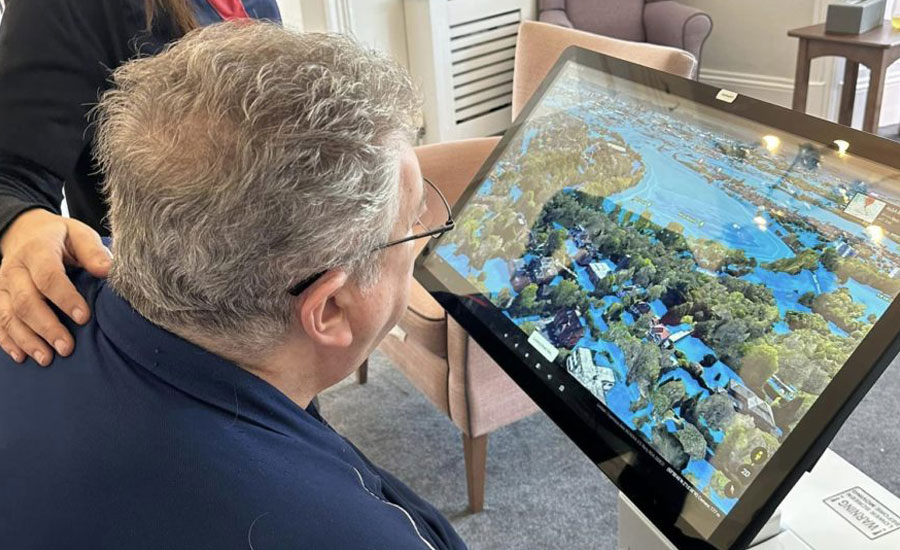How Cutting-Edge Technology Is Transforming Care Home Living

Technology is changing how we live – and care homes are no exception. These days, modern care homes use innovative tools to create safer and fulfilling environments for their residents.
So, how is technology improving care home life?
Keep reading as we explore how technology is transforming everyday life in care homes, the benefits it brings and what the future holds for this exciting evolution in elderly care.
What Role Does Technology Play in Enhancing Care Home Life?
Care homes today are turning to technology to make life better for their residents in exciting and meaningful ways:
Smart Monitoring Systems
Wearable devices – Residents use wearables to monitor vital signs like heart rate and blood pressure, enabling early detection of health issues.
In-room sensors – Sensors detect falls or unusual movements, instantly alerting staff to ensure resident safety.
Telehealth Services
Remote consultations – Telemedicine platforms facilitate virtual doctor visits, reducing the need for residents to travel for medical appointments.
Specialist access – Residents can consult specialists remotely, ensuring comprehensive care without leaving the facility.
Cognitive Support Technologies
Virtual reality therapy – VR provides immersive experiences that stimulate memory and cognitive function, benefiting residents with dementia.
Brain-training apps – Applications offer exercises to maintain and improve cognitive abilities, promoting mental agility.
Assistive Robotics
Companion robots – Robots like Paro the Seal offer companionship and can engage residents in activities, reducing feelings of loneliness.
Service robots – Robots assist with tasks such as medication delivery, allowing staff to focus more on direct resident care.
Smart Home Integration
Voice-activated assistants – Devices like Amazon Alexa help residents manage daily tasks and stay connected with family.
Automated lighting and climate control – Smart systems adjust lighting and temperature for comfort and safety, tailored to individual preferences.
Digital Care Management
Electronic health records – Also known as EHR, these digital records streamline information sharing among caregivers, ensuring coordinated and personalised care.
Mobile care apps – These apps enable caregivers to track care plans and communicate effectively, enhancing efficiency and responsiveness.
Social Connection Tools
Video calling platforms – Tablets and apps facilitate video calls, helping residents maintain relationships with family and friends.
Online communities – Virtual groups and forums provide social interaction opportunities, reducing feelings of isolation.
Predictive Analytics
Health monitoring – Analysing data from various sources to predict and prevent health issues, allowing for proactive care.
Resource allocation – Optimising staff deployment and resource use based on predictive models to enhance care efficiency.
The Benefits of Technology in Care Homes
Technology in care homes is a game changer. Enhancing every part of the care experience, it provides meaningful improvements for everyone.
Here’s how it’s making a difference:
For Residents
Innovative technologies like wearable health trackers and voice-activated assistants help residents manage daily tasks, like taking medications and adjusting room temperatures, promoting dignity and self-reliance.
Smartwatches allow older adults to monitor their vitals while staying connected to caregivers in real time.
Virtual reality is transforming mental health in care homes. Residents can ‘travel’ to dream destinations, relive cherished memories or enjoy calming nature scenes.
A study published in 2020 found that VR therapy significantly improves emotional well-being in older adults by enhancing memory recall and reducing loneliness.
Tablets and interactive apps made specifically for elderly adults make it easy to engage in social events, play games or connect with loved ones.
For Caregivers
Gone are the days of endless admin and paperwork. Thanks to new and improved tech in care homes, digital care management systems streamline everything from medical records to daily schedules. Caregivers can spend less time filling out forms and more time connecting with residents.
Predictive analytics tools help caregivers anticipate residents’ healthcare needs by analysing data from health trackers and sensors. Early intervention is becoming the norm, enabling caregivers to address health concerns before they escalate.
Predictive tools like those used by CBRE Care Homes are revolutionising how care teams deliver proactive, not reactive, support.
By automating routine tasks, such as medication schedules or meal reminders, caregivers have more time for meaningful in-person interactions, enriching both the resident’s and the caregiver’s experience.
For Families
Families can receive updates on their loved one’s health and well-being through apps and online portals. Knowing their parent or grandparent is safe, engaged, and well-cared-for provides invaluable relief and peace of mind.
Whether it’s a video call over tea or sharing photos through a family app, technology keeps relationships strong even when miles apart. Residents feel closer to their families and families feel connected to their loved ones’ lives.
According to NHS Digital, care homes that adopt video calling technologies see a 40% improvement in family satisfaction levels.
How Technology is Shaping Happier Care Homes
These technological advancements are enormous upgrades. They’re reshaping what it means to live and thrive in a care home. As innovation continues, the focus will shift even further toward creating homes where residents are more empowered, caregivers are supported and families feel closer than ever.
Ready to explore...
